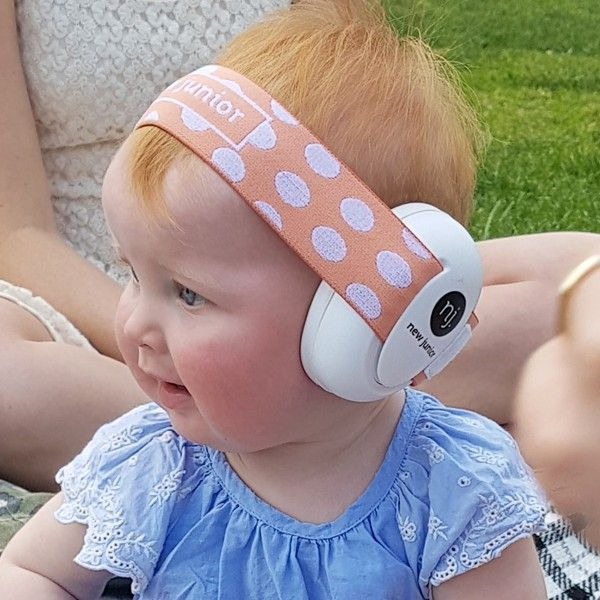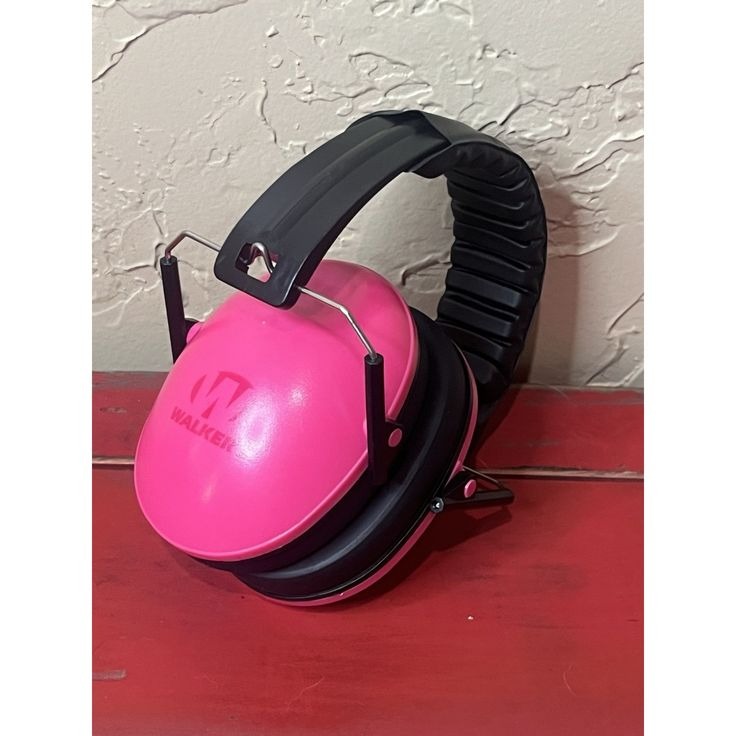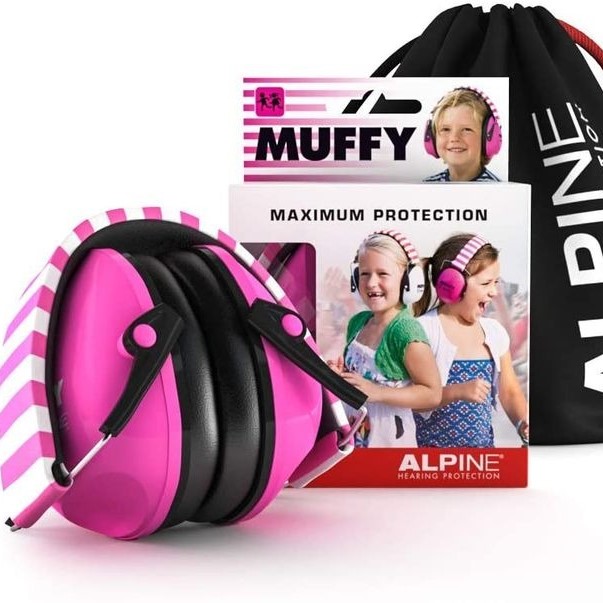Introduction
In today’s fast-paced world, where noise pollution is increasingly prevalent, protecting our children from excessive sound is more crucial than ever. Toddler ear protection has become an essential consideration for parents and caregivers, especially as we move into 2025. Young ears are particularly vulnerable to loud sounds, which can lead to both immediate discomfort and long-lasting hearing damage.

Children, especially toddlers, may not be aware of the dangers of loud noises. Whether they are at a concert, in a busy urban area, or even just enjoying playtime at home, noise exposure is a reality that can have serious implications for their hearing health. This article will delve into the need for effective toddler ear protection, the various options available, and practical tips for ensuring their little ears remain safe.
Why Toddler Ear Protection Matters
Understanding the Vulnerability of Young Ears
- Developmental Sensitivity: Toddlers have delicate, developing auditory systems that are more susceptible to damage from loud noises. The structures in their ears are not fully formed, making them particularly vulnerable to the impact of high decibel levels.
- Risk of Noise-Induced Hearing Loss: According to the World Health Organization (WHO), exposure to noise levels above 85 decibels can lead to permanent hearing damage. Unfortunately, many everyday environments can easily exceed this level, putting children at risk.
- Cognitive and Emotional Development: Hearing plays a significant role in a child’s overall development. Interruptions in auditory input can affect language acquisition, social skills, and emotional well-being. Protecting their hearing helps ensure they can develop normally.
Potential Sources of Loud Noise
- Activities and Events: Common events like birthday parties, fireworks displays, sporting events, and concerts can expose toddlers to loud noises. Parents should be aware of the decibel levels in such environments and take appropriate action.
- Daily Environments: Everyday noise from traffic, construction sites, and even household appliances can contribute to excessive sound exposure. Recognizing these sources allows parents to address potential hazards.
- Increased Awareness of Risks: As awareness of noise-related health issues grows, there is a need to educate parents about effective strategies to protect their children from harmful sound exposure.
Types of Toddler Ear Protection Available
Exploring Ear Protection Options
When it comes to selecting the right toddler ear protection, several types of products are available, each offering unique benefits. Understanding the differences between these options can help parents make informed decisions based on their child’s needs.
- Earplugs: Soft foam earplugs are a popular choice for toddlers due to their portability and effectiveness. These earplugs create a barrier against loud sounds and can easily be used in various situations, from concerts to quiet time at home.
- Best Uses: Ideal for short-term use in loud environments. They fit snugly in the ear canal for a comfortable fit.
- Considerations: Ensure they are made from safe, non-toxic materials. Supervision is necessary to prevent toddlers from putting them inappropriately.
- Noise-Cancelling Headphones: These headphones are designed to reduce external noise while still providing comfort. Many manufacturers create headphones specifically for children, taking into account their head size and ear shape.
- Best Uses: Effective for longer durations, such as during flights or car rides. They allow for a lower volume when listening to music or movies.
- Considerations: Choose lightweight models that securely fit on toddlers’ heads without causing discomfort. Adjustable headbands can enhance fit.
- Over-the-Ear Earmuffs: Designed to cover the entire ear, earmuffs provide substantial noise reduction compared to earplugs. They are padded for comfort and can be particularly effective in consistently loud environments.
- Best Uses: Suitable for environments like construction sites, concerts, and sports events. They provide maximum protection from high levels of noise.
- Considerations: Look for muffs with adjustable bands to ensure a snug fit. Ensure that the material is soft to provide comfort during prolonged use.
Finding the Right Fit and Style
When choosing any type of ear protection, finding the right fit is crucial, especially for toddlers. Factors affecting the effectiveness of ear protection include:
- Comfort: Comfortable ear protection leads to better compliance, which means toddlers are more likely to wear them. Look for products with soft materials and ergonomic designs.
- Size: Ensure that the protection is appropriately sized. Earplugs, headphones, and earmuffs should fit securely without causing discomfort, as a loose fit may reduce effectiveness.
- Portability: Given the active lifestyle of toddlers, consider options that are easy to carry and store. Earplugs and foldable headphones can provide convenience during travels.
Situational Awareness: Events Requiring Ear Protection
Protecting Ears During Air Travel
Frequent air travel can expose toddlers to changes in cabin pressure and loud sounds. Here’s how to protect their ears during flights:
- Ear Protection Devices: Invest in noise-cancelling headphones or specialized earplugs designed for children. This can help minimize the noise from engines and cabin pressure changes.
- Ear Equalization Techniques: Encourage chewing or sucking during takeoff and landing. This action can help equalize pressure and reduce discomfort.
- Distraction Techniques: Keep toddlers occupied with games, movies, or books during flights. Engaging them in activities can minimize anxiety and discomfort related to ear pressure changes.
Swimming Safety
Swimming can also pose risks to toddler ears. Here are some strategies to protect their ears when engaging in water activities:
Earplugs for Swimming
- Importance of Earplugs
Consider using specialized swimming earplugs designed to keep water out of the ears. These earplugs are uniquely crafted to create a seal that prevents water from entering the ear canal, which is crucial during swimming activities. - Types of Swimming Earplugs
There are various types of earplugs available for swimming, including:- Foam Earplugs: Soft and moldable, they conform to the shape of the ear canal for a snug fit. While they’re relatively inexpensive, some may find them less comfortable than other options.
- Silicone Earplugs: Reusable and often more durable than foam, silicone earplugs provide a waterproof seal and are comfortable for extended wear. They are also easy to clean.
- Custom-Fit Earplugs: For those who swim regularly, custom-fit earplugs molded to an individual’s ear can provide the best fit and protection. These are typically made by audiologists and can offer maximum comfort and effectiveness.
- Benefits of Using Earplugs
Using earplugs specifically designed for swimming can help:- Prevent Ear Infections: Exposure to water can lead to conditions like swimmer’s ear, which is an infection of the outer ear canal. Earplugs create a barrier that minimizes water contact, reducing the risk of infection and promoting ear health.
- Reduce Discomfort: Water trapped in the ear can cause discomfort or a feeling of fullness. Earplugs help eliminate this issue, allowing for more enjoyable swimming experiences.
- Choosing the Right Earplugs
When selecting swimming earplugs for toddlers, consider factors such as:- Size and Fit: Ensure that the earplugs are appropriately sized for a child’s ears to ensure they provide an effective seal.
- Ease of Use: Look for earplugs that are easy to insert and remove, as this can make the process smoother for young children.
- Safety Material: Ensure the earplugs are made from safe, non-toxic materials to avoid any allergic reactions or irritation.
Supervision
- Importance of Supervision
Always supervise children closely while swimming or near water. Young children can easily become overwhelmed or accidentally get into dangerous situations, so continuous monitoring is essential for maintaining their safety. - Active Monitoring
Engage in active supervision by following these guidelines:- Stay Close: Always remain within an arm’s reach of your child while they are in or near water. This positioning allows for a quick response if any issues arise.
- Avoid Distractions: Refrain from using phones or getting distracted by conversations with others while supervising. Maintaining your focus on the child enhances their safety and ensures they are continually monitored.
- Designate a Water Watcher: If swimming in a group, take turns with other adults to act as designated “water watchers.” This approach ensures someone is consistently responsible for monitoring the children.
- Teach Water Safety
As supervision occurs, teaching children about water safety is crucial. Explain the importance of staying within designated swimming areas, listening to adults, and recognizing potential dangers, such as deeper areas in the water. - Establishing Swimming Rules
Before swimming, establish clear rules for children to follow. These might include:- No running near the pool.
- Always ask an adult before going into the water.
- Stay away from the edges or deep ends without supervision.
Post-Swim Care
- Drying the Ears
After swimming, it’s essential to gently dry the outer ear. Use a clean, soft towel to pat the area dry. Avoid inserting the towel into the ear canal, as this can cause injury and push water further into the ear. - Avoiding Objects in the Ear Canal
It’s crucial to avoid inserting cotton swabs or other objects into the ear canal. Doing so can irritate the ear, push wax deeper, and potentially lead to infections or injury. The ear is self-cleaning, and foreign objects should not be introduced. - Allow for Air Circulation
After swimming, ensure that the ears have a chance for proper air circulation. Position the child to allow air to circulate around the ears, which can help any moisture evaporate:- Tilt the head. Encourage the child to tilt their head to the side to help drain any remaining water.
- Use a Hairdryer on Low: In certain situations, using a hairdryer on a low setting at a safe distance from the ear can help dry moisture. Ensure it’s set on low to avoid any risk of burns or discomfort.
- Monitoring for Symptoms
After swimming, be vigilant for signs of discomfort, such as:- Itching or redness around the ear.
- Pain or persistent discomfort in the ear.
- Fluid discharge that could indicate an infection.
If any of these symptoms occur, consult a healthcare professional for advice on treatment and management. Recognizing these signs early can help ensure the child remains healthy and comfortable.
Common FAQs
Do 2-Year-Olds Need Ear Protection?
Yes, toddlers, including 2-year-olds, need ear protection in noisy environments. Protecting their ears can prevent potential hearing damage and promote healthier auditory development.
Can a 2-Year-Old Wear Headphones?
Absolutely! A 2-year-old can wear headphones, but ensure they are designed specifically for young children. Look for lightweight, adjustable models that are comfortable and safe.
How to Protect Toddler Ears During Flight?
To protect toddler ears during flights, use noise-cancelling headphones or earplugs, encourage chewing or sucking to equalize ear pressure, and engage them in distracting activities to keep them calm.
How to Protect a Toddler’s Ears When Swimming?
Using specialized swimming earplugs can help protect toddler ears when swimming. Always supervise them while in or near water, and gently dry their ears afterward to prevent infections.
Conclusion
In conclusion, toddler ear protection is an essential consideration for parents dedicated to safeguarding their children’s hearing in 2025. With increasing noise levels in various environments, ensuring that toddlers are equipped with the right ear protection can mitigate the risks of hearing damage.
Choosing the appropriate type of ear protection, understanding when it is necessary, and recognizing the specific needs of toddlers can foster a safe environment for healthy hearing. Awareness and proactive measures can help parents navigate the complexities of protecting their little ones’ ears.
As we move further into 2025, the importance of prioritizing toddler ear protection will only continue to grow. By investing in quality protection and understanding best practices, families can ensure a healthier, safer, and more enjoyable auditory experience for their children as they grow. Together, we can create an environment where our little ones thrive, free from the harmful effects of excessive noise.




